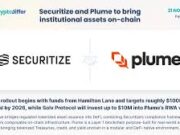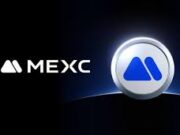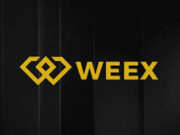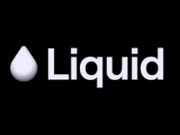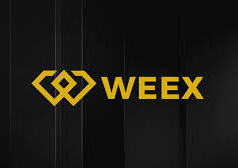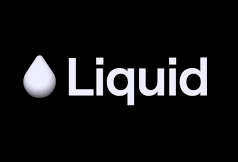LMAX Group has taken a major step forward in the crypto derivatives space, launching perpetual futures contracts tied to Bitcoin (BTC) and Ethereum (ETH) with up to 100× leverage aimed specifically at institutional clients. This bold move not only meets growing demand from professional trading firms, brokers, and hedge funds, but also signals a maturation in how regulated exchanges compete in the volatile world of digital assets. Below, we explore what this means, how it works, the opportunities, and the risks – and why it matters for institutions and for the broader crypto-market.
What Exactly Are Perpetual Futures, and Why 100× Leverage?
First and foremost, perpetual futures (or “perps”) are derivative contracts that differ from traditional futures in that they have no expiration date. Rather than delivering an asset on a fixed date, a perpetual contract can be held indefinitely, so long as margin and funding requirements are met. (Cointelegraph)
Meanwhile, 100× leverage means institutions can control a position that is 100 times the size of their margin. Put differently, only 1% of the notional size of a trade might be required up front (initial margin), though maintenance margin and funding fees still apply. While this amplifies profit potential, it also magnifies losses and operational complexity. (The Cryptonomist)
What LMAX Group Is Offering
LMAX Group’s new product offering includes the following features:
- Pairs currently supported: BTCUSD and ETHUSD perps, settled in USD. Additional pairs are expected to be added in future. (Markets Media)
- Cash-settled contracts: That is, profits and losses are paid out in fiat (or equivalent cash) rather than requiring delivery of the underlying crypto. This tends to simplify custody and risk management. (The Cryptonomist)
- Target audience: Institutional clients — proprietary trading firms, brokers, hedge funds — who already have infrastructure for derivatives and risk management, and who require regulated environments. (Cointelegraph)
- Leverage up to 100×: Highest allowed exposure, though margin, funding, liquidity and regulatory constraints will likely limit feasible use. (Cointelegraph)
LMAX has emphasized that this is not just about higher leverage; it’s about offering institutional quality: transparent price discovery, regulated infrastructure, robust liquidity, and precise execution. (Markets Media)
Why This Matters: Institutional Demand & Market Context
There are several reasons why LMAX’s launch comes at just the right time, and why it could shift dynamics in the crypto derivatives ecosystem:
- Growing demand from institutions
Many institutional investors have been asking for more sophisticated tools to manage exposure to crypto. They want derivatives that allow hedging, arbitrage, capital efficiency, and access to leverage without taking custody of the underlying assets. LMAX’s offering responds to this demand. (Cointelegraph) - Regulated environments becoming more important
As regulatory clarity increases in many jurisdictions, institutions prefer dealing with regulated venues, which offer stronger governance, risk controls, audit trails, and counterparty risk mitigation. LMAX, being a regulated fintech and exchange infrastructure provider, is tapping into that requirement. (Markets Media) - Perpetual futures dominate derivatives trading
Already, perpetual futures dominate a substantial portion of crypto derivatives volume. According to Kaiko and others, a large share of BTC derivative activity comes through perps. Thus, offering perps is essential for venues wishing to remain competitive. (Cointelegraph) - Competitive pressure
Other major players—like Coinbase Financial Markets and the Chicago Board Options Exchange (CBOE)—are also launching or planning similar offerings. Thus, LMAX’s move is partly defensive and partly opportunistic. (Cointelegraph)
Key Benefits for Institutions
With the above in mind, institutions stand to gain in several ways:
- Hedging without custody risk: Because contracts are cash-settled, there is no need to hold the underlying Bitcoin or Ethereum. This simplifies custody, audit, and compliance.
- Capital efficiency: High leverage allows institutions to deploy less capital for the same exposure, freeing up funds for other strategies.
- Arbitrage and trading strategies: Institutional traders, proprietary firms, etc., can exploit price differences between spot, futures, and perps markets, particularly when leverage and liquidity are strong.
- Regulated infrastructure and transparent pricing: Getting exposure via trusted exchanges helps reduce counterparty and operational risk, especially compared to unregulated or offshore platforms.
Risks and Challenges Institutions Must Consider
However, despite its attractiveness, high-leverage perpetual futures come with serious risks and considerations:
- Volatility risk: Cryptocurrencies are notoriously volatile. With 100× leverage, even small percentage moves can trigger large losses or margin calls.
- Margin and funding costs: While initial margin may be low (e.g., ~1%), maintenance margin, funding rates, and potential slippage under stressed conditions can eat into returns.
- Liquidity and slippage: During periods of market stress, spreads widen, liquidity dries up, and executing large positions becomes costly.
- Counterparty risk and regulation: Even regulated venues have risk. For example, agreements, default procedures, clearing arrangements, and oversight must be robust. Institutions must do due diligence.
- Operational complexity: Systems must support risk monitoring, real-time margin management, reporting, and trade reconciliation. Many institutions will need to adapt existing infrastructure.
How LMAX’s Offering Compares
To understand LMAX’s place, it helps to compare with other players in the field:
| Platform | Leverage Offered | Target Audience | Regulatory/Location Notes |
|---|---|---|---|
| LMAX Group | Up to 100× for BTC & ETH perps, cash-settled, regulated fintech / exchange infrastructure. (Cointelegraph) | Institutions (prop firms, brokers, hedge funds) | UK / global, regulated environment, strong liquidity and execution. (Markets Media) |
| Coinbase Financial Markets | Launched perps earlier for US customers (though leverage levels may differ). (Cointelegraph) | Retail & institutional (depending on jurisdiction) | US regulatory environment; expanding offerings. |
| CBOE | Plans for a perps product, expected soon. (Cointelegraph) | Institutional & possibly retail depending on regulation | Heavily regulated in US context. |
Thus, while LMAX is not inventing the product, the combination of regulated infrastructure + very high leverage + institutional focus may set it apart.
Potential Market & Strategic Impacts
LMAX’s launch could lead to several shifts in how institutions and the broader market behave:
- Shift of trading volume from unregulated or semi-regulated exchanges toward more formally regulated venues. Because institutions often must comply with strict rules around counterparty risk and reporting, they may prefer venues like LMAX.
- Increased derivative product offerings: As competition heats up, other exchanges may increase leverage, extend product lines (new pairs, indices), or improve connectivity and execution speed in order to remain attractive.
- Greater risk disclosure and prudential regulation: With high leverage comes attention from regulators. We may see more rules around maximum leverage for institutions, margin regulation, risk limits, and disclosure requirements.
- Enhancement in market infrastructure: Supporting 100× leverage and perps at scale requires robust matching engines, risk engines, real-time data, liquidity management, and connectivity (FIX, APIs, etc.). Institutions will invest more in infrastructure.
How to Use LMAX Perpetual Futures Wisely (for Institutions)
To benefit while managing risks, institutions should:
- Begin with smaller positions to test how cash flows, funding rates, slippage, and liquidity behave under live conditions.
- Integrate strong risk management protocols: stress-testing, stop-losses, portfolio diversification.
- Monitor funding rates and margin requirements continuously; leverage amplifies both.
- Use perps as part of a broader strategy, including hedging against spot portfolios, using arbitrage, or balancing exposure.
- Ensure compliance with local regulation, especially around derivatives, leverage, and reporting.
Regulatory & Reporting Considerations
Because this offering is aimed at institutional clients, regulatory factors are central:
- Institutions will need to ensure compliance with their own jurisdiction’s rules around derivatives, leverage, financial reporting, and market conduct.
- Cash-settled contracts simplify some aspects of reporting (since you don’t deal with physical delivery), but introduce others (e.g., mark-to-market, daily P&L, margin calls).
- Regulatory oversight may impose limits on how much leverage is allowed, what disclosures must be made, how risk is managed (e.g. by central counterparty clearing or other risk mitigation mechanisms).
- As more regulated exchanges offer perps, competition may push for regulatory harmonization or standardization of terms, margin rules, and risk controls.
Conclusion: Why LMAX’s Move Is Significant
In conclusion, LMAX Group’s launch of 100× leveraged, cash-settled BTC and ETH perpetual futures for institutional clients marks a significant moment in the evolution of crypto finance. Not only does it answer growing demand for sophisticated tools among large buyers and traders, but it also raises the bar for regulated infrastructure, risk management, and competitive offerings in the crypto derivatives market.
Because perpetual futures have for years dominated crypto derivatives volume, developing regulated, high-leverage equivalents helps bridge the gap between retail-heavy or offshore platforms and institutions that require trust, transparency, and robust execution. Moreover, as leverage, regulation, and product sophistication increase in tandem, institutions are likely to shift more activity to venues with strong governance.
Related Articles & Further Reading
- For a primer on what perpetual futures are, how they work, and how they differ from traditional futures, see Perpetual Futures Contracts and Cryptocurrency Market Quality at Cornell’s Emerging Markets blog. (Cornell SC Johnson)
- To compare LMAX’s offerings to those of Coinbase and CBOE, check out recent reports from Cointelegraph and Bloomberg. (Cointelegraph)
- For official details from LMAX—exchange infrastructure, regulatory status, and trading instruments—see the LMAX Digital site. (internal link)

